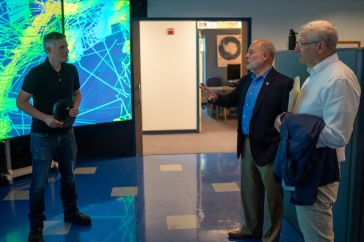Each year, tons of burning fossil fuel pumps greenhouse gases like carbon dioxide into the air and roughly 25 percent of that CO2 gets absorbed by the world’s oceans. This ocean acidification (OA) turns the carbon dioxide into carbonic acid which can dissolve the outer shells of shellfish, like oyster and clams, and can cause major consequences. In the mid-2000s, ocean acidification was a big problem on the West Coast, causing a 60 to 80 percent decrease in shellfish production.
Researchers at the University of New Hampshire are working with local hatcheries to try and prevent that same crisis from happening here on the East Coast. UNH’s Joe Salisbury has created a “Black Box” that helps monitor the carbon dioxide, and other variables, in the ocean water being brought into the hatchery. The measurements help hatchery owners, like Bill Mook of Mook Sea Farm in Maine, to make adjustments and combat the problems at the earliest stages of development.



















































